
Anatomy Of A Neuron ANATOMY
The nervous system is a network of neurons whose main feature is to generate, modulate and transmit information between all the different parts of the human body. This property enables many important functions of the nervous system, such as regulation of vital body functions ( heartbeat, breathing, digestion), sensation and body movements.
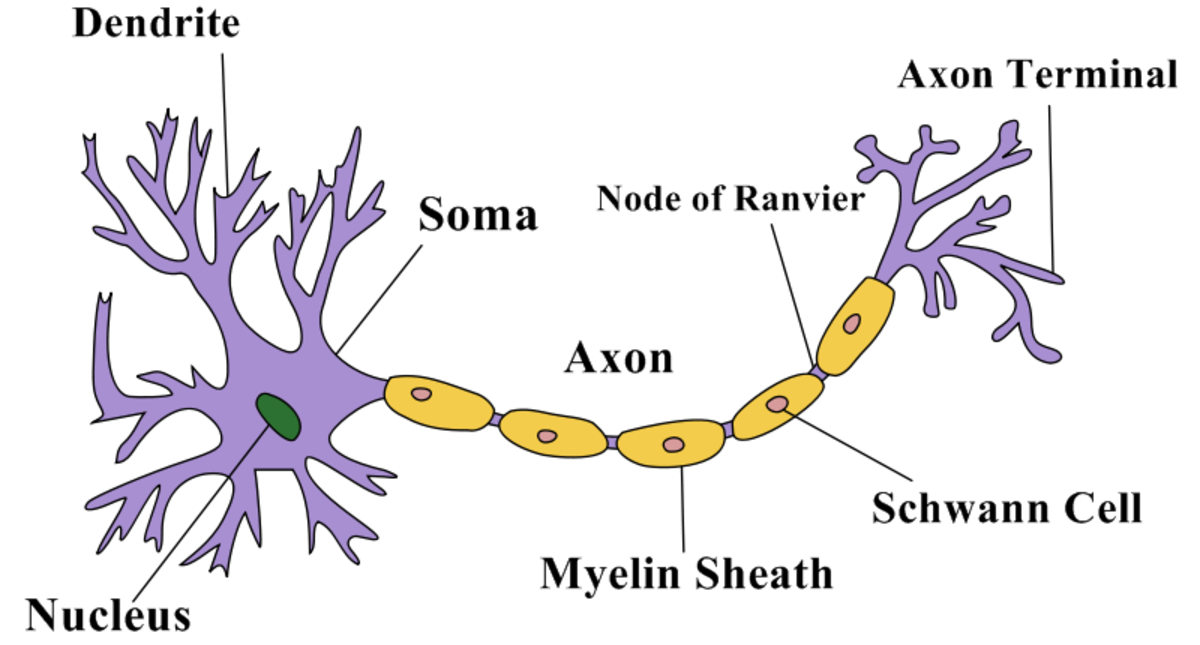
Structure of a Neuron Owlcation
At the synapse, the firing of an action potential in one neuron—the presynaptic, or sending, neuron—causes the transmission of a signal to another neuron—the postsynaptic, or receiving, neuron—making the postsynaptic neuron either more or less likely to fire its own action potential. Schematic of synaptic transmission.
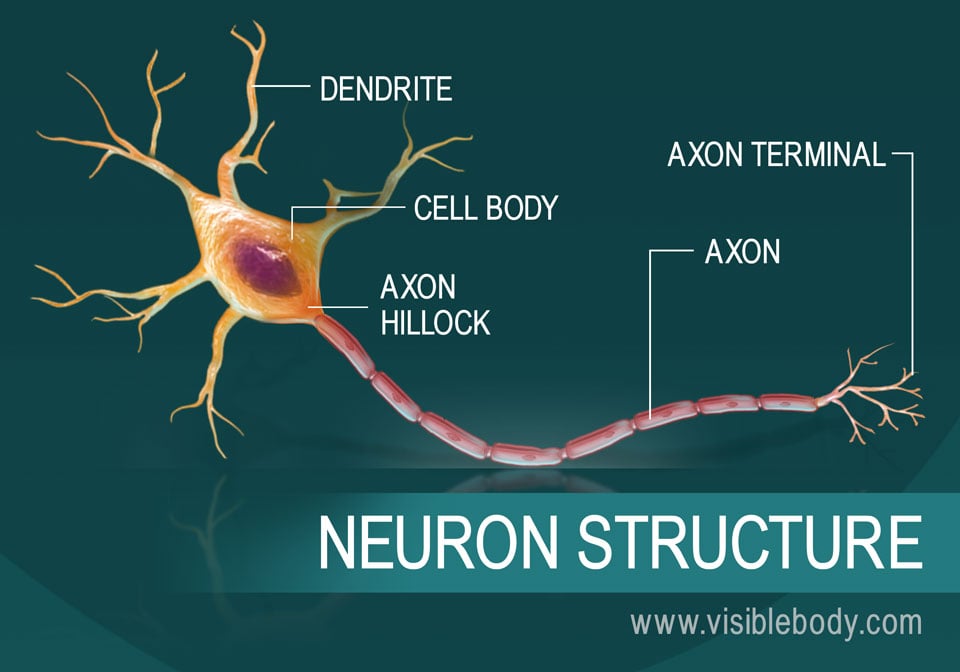
Neurons
Terminal buttons are found at the end of the axon, below the myelin sheath, and are responsible for sending the signal on to other neurons. At the end of the terminal button is a gap known as a synapse. Neurotransmitters carry signals across the synapse to other neurons. When an electrical signal reaches the terminal buttons, neurotransmitters.
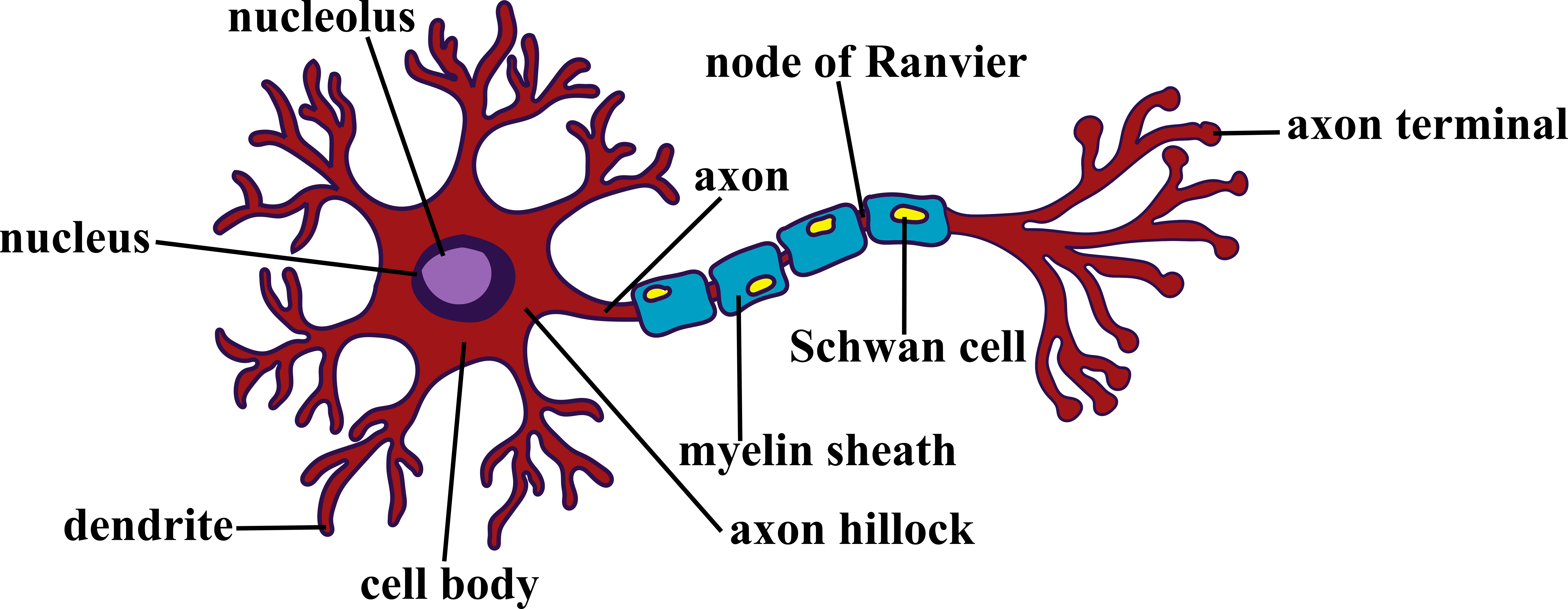
neural circuit diagram
Classes of neurons Based on their roles, the neurons found in the human nervous system can be divided into three classes: sensory neurons, motor neurons, and interneurons. Sensory neurons Sensory neurons get information about what's going on inside and outside of the body and bring that information into the CNS so it can be processed.

What Is a Neuron? Diagrams, Types, Function, and More
About Transcript Neurons (or nerve cells) are specialized cells that transmit and receive electrical signals in the body. Neurons are composed of three main parts: dendrites, a cell body, and an axon.

FileNeuron1.jpg Simple English Wikipedia, the free encyclopedia
An Easy Guide to Neuron Anatomy with Diagrams Anatomy Types Function Research Takeaway Neurons, also known as nerve cells, send and receive signals from your brain. While neurons have a.
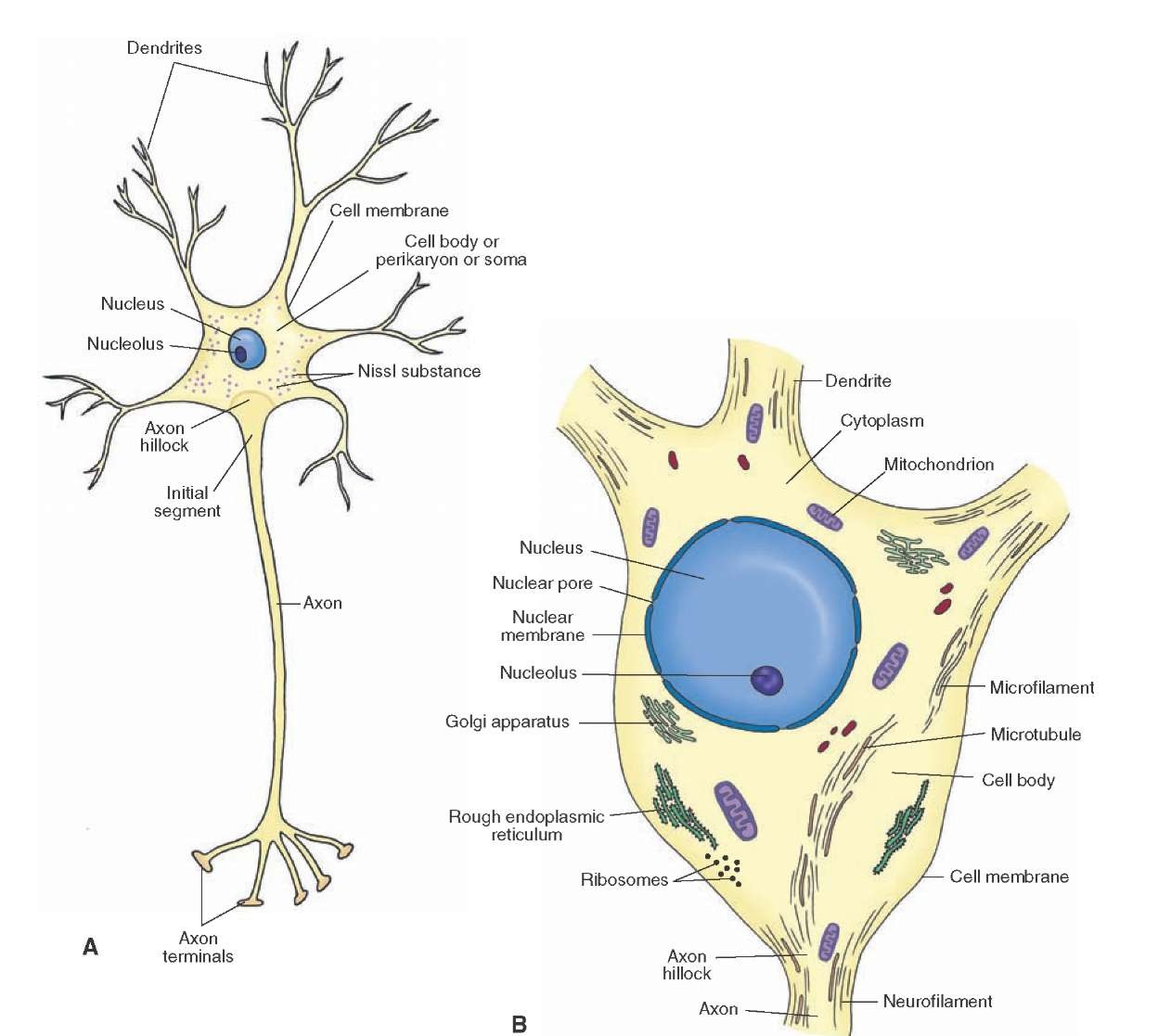
Histology of the Nervous System (The Neuron) Part 1
Parts of a Neuron Diagram Although they have a characteristic elongated shape, they vary widely in size and properties based on their location and type of functions they perform. While they have the common features of a typical cell, they are structurally and functionally unique from other cells in many ways.
:max_bytes(150000):strip_icc()/neuron-anatomy-58530ffe3df78ce2c34a7350.jpg)
Neuron Anatomy, Nerve Impulses, and Classifications
Cerebellum - molecular, Purkinje, granular layers. Peripheral nerves - epineurium, perineurium, endoneurium. This article will explain the histology of neurons, providing you with information about their structure, types, and clinical relevance. It will also cover briefly the histological layers of the central and peripheral nervous systems.
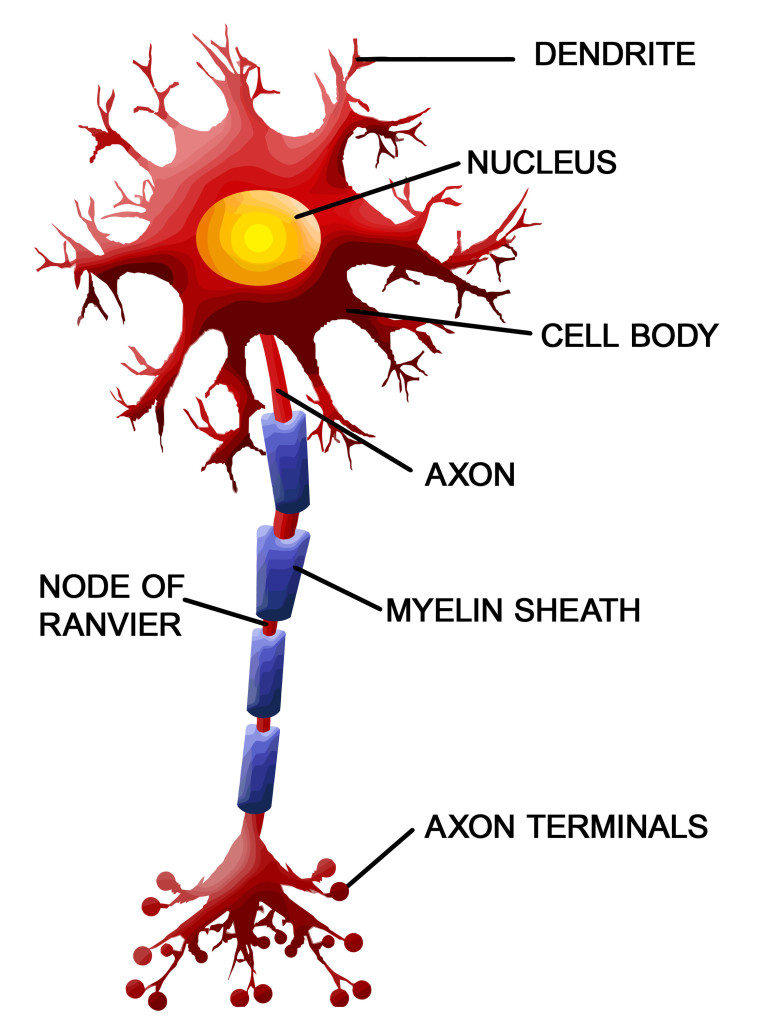
The Neuron External Structure and Classification Interactive Biology, with Leslie Samuel
Nervous system Schematic of an anatomically accurate single pyramidal neuron, the primary excitatory neuron of the cerebral cortex, with a synaptic connection from an incoming axon onto a dendritic spine Neurons are the primary components of the nervous system, along with the glial cells that give them structural and metabolic support. [4]

Neuron Diagram Straight from a Scientist
Neuron Diagram & Types | Ask A Biologist show/hide words to know Neurons and Nerves Neurons are unique for many reasons. For one, they have a shape that is not like any other cells. Nerve cells are also some of the longest cells in your body. There are nerve cells as long as a meter. They stretch from your hips all the way down to your toes!

Health Lab 4.1 Introduction
An Easy Guide to Neuron Anatomy with Diagrams By Olivia Guy-Evans, MSc Updated on November 9, 2023 Reviewed by Saul Mcleod, PhD Neurons are the information processing units of the brain responsible for sending, receiving, and transmitting electrochemical signals throughout the body.

A diagram of a neuron and its functions. a study in chartreuse
A detailed diagram of a neuron, showing the synapse, cell body, axon, and dendrites. To unlock this lesson you must be a Study.com Member.

Figure 7 4 Structure Of A Typical Motor Neuron Bangmuin Image Josh
A Labelled Diagram Of Neuron with Detailed Explanations Biology Biology Article Diagram Of Neuron Diagram Of Neuron A neuron is a specialized cell, primarily involved in transmitting information through electrical and chemical signals. They are found in the brain, spinal cord and the peripheral nerves. A neuron is also known as the nerve cell.

What does a neuron look like? Biology Questions
The cell body of a neuron, also known as the soma, is typically located at the center of the dendritic tree in multipolar neurons.It is spherical or polygonal in shape and relatively small, making up one-tenth of the total cell volume.. The functionality of the neuron is highly dependent on its cell body as it houses the nucleus, which contains the genetic material (DNA) of the cell as well as.
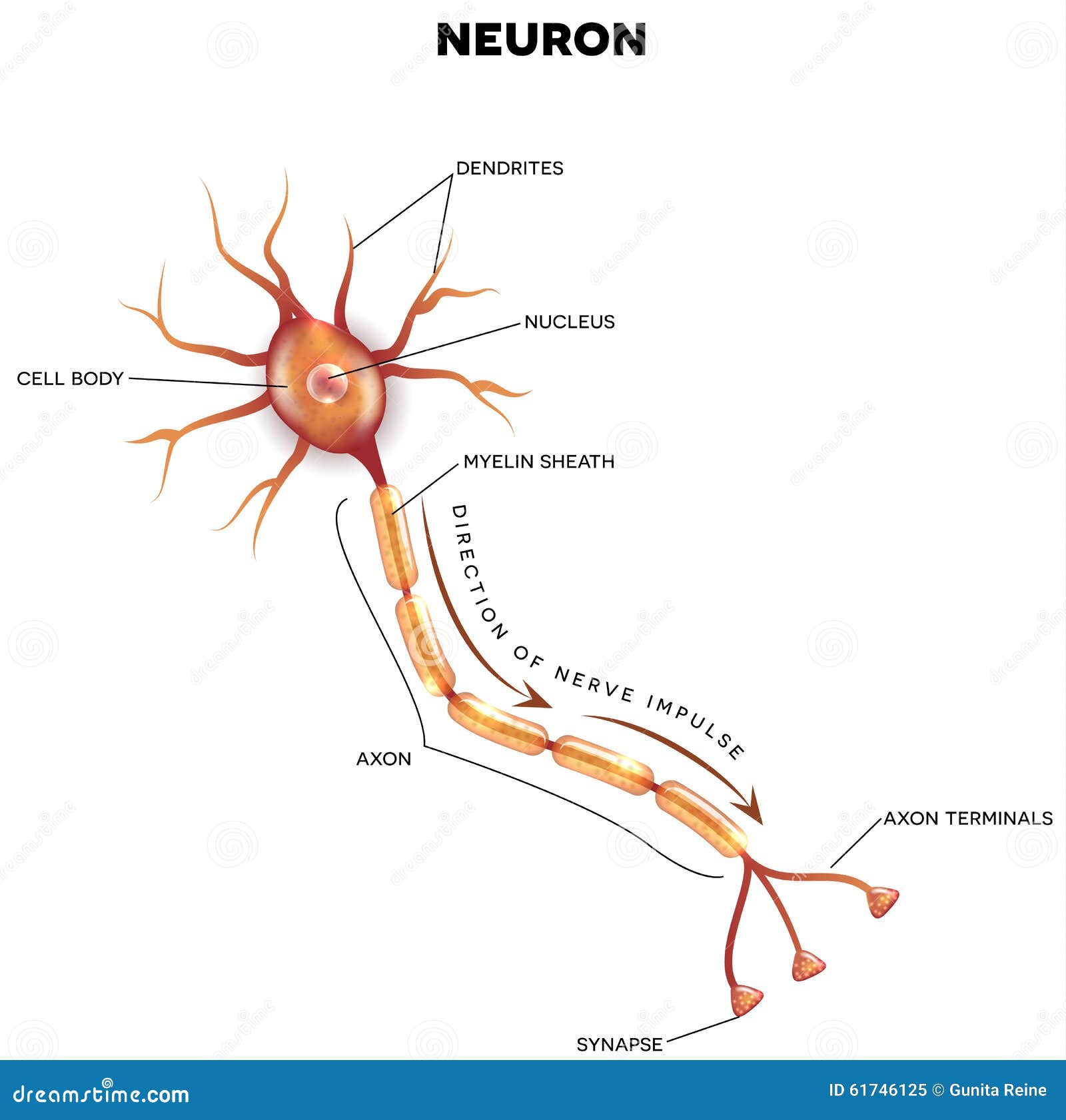
Labeled Diagram of the Neuron Stock Vector Illustration of anatomical, peripheral 61746125
The parts of the neuron have been labeled. Your challenge is to write the correct name for each part and explain what it does. If you need some help, visit the web article listed below. Neuron Anatomy Activity Synapses: Send electrical impulses to neighboring neurons.
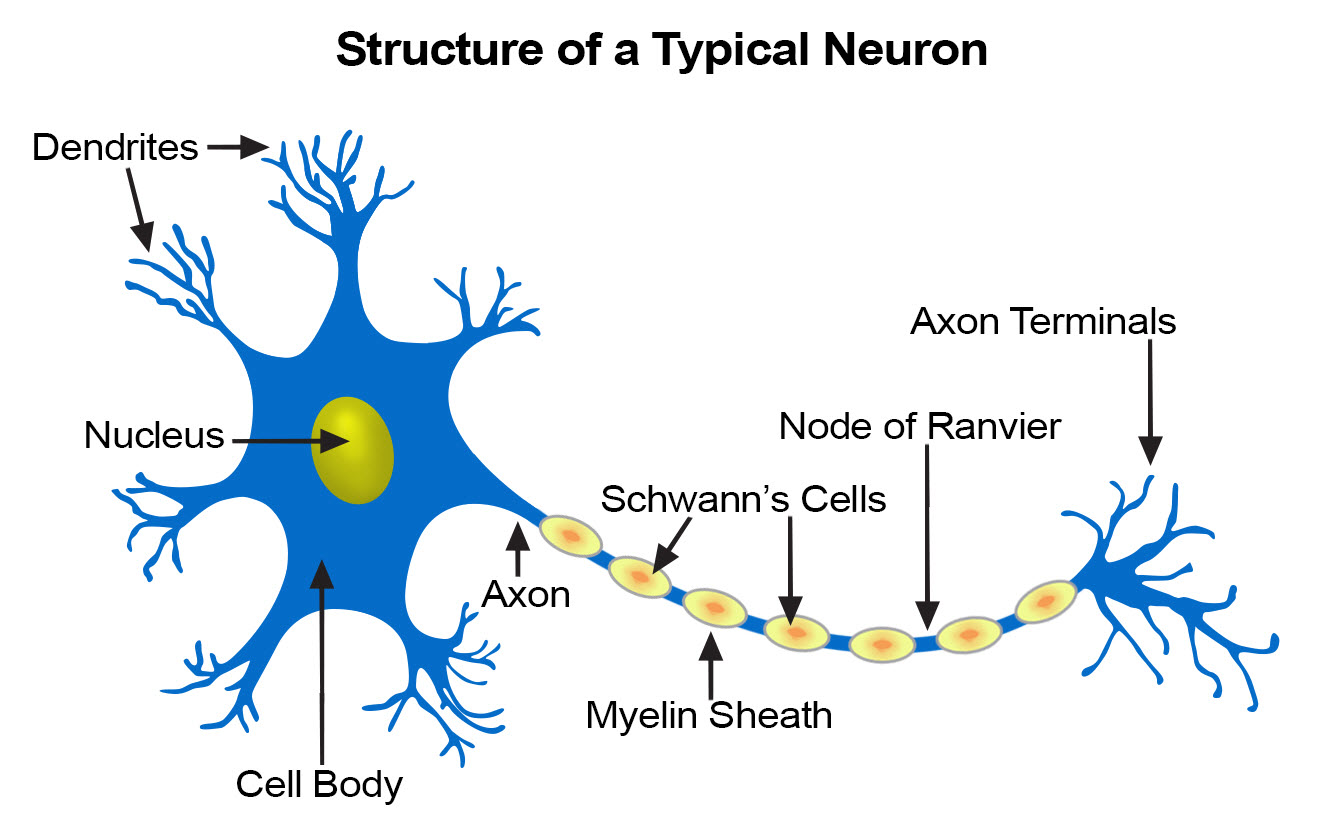
Nerve Tissue SEER Training
Complete neuron cell diagram. Neurons (also known as neurones and nerve cells) are electrically excitable cells in the nervous system that process and transmit information. In vertebrate animals, neurons are the core components of the brain, spinal cord and peripheral nerves. embedded text that can be translated into your language, using any.